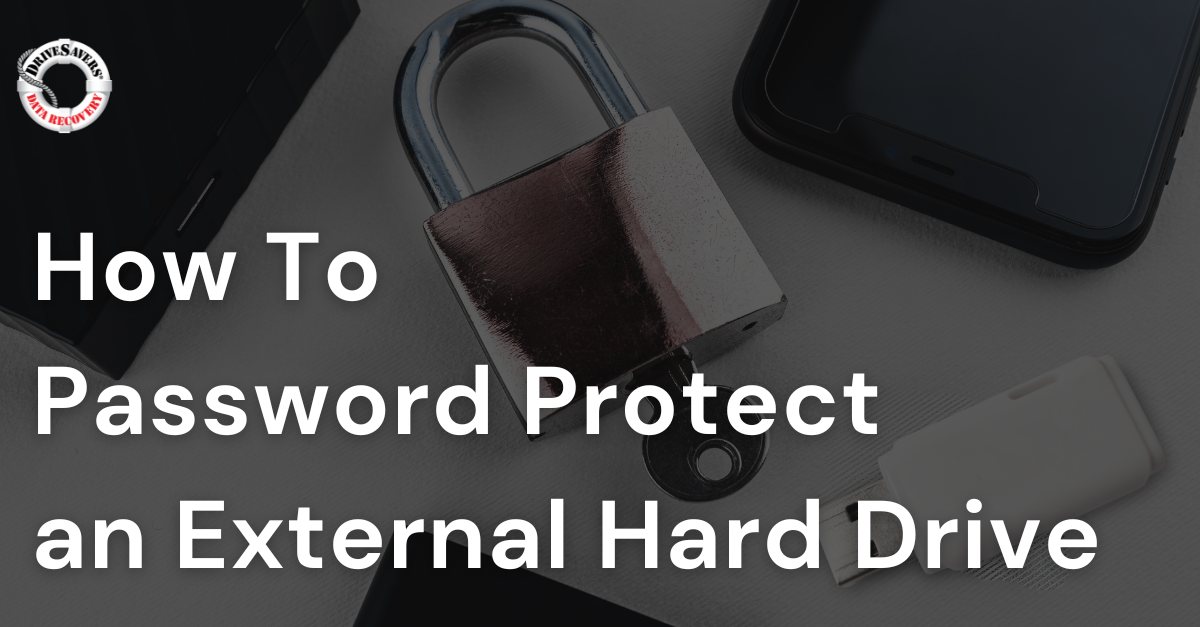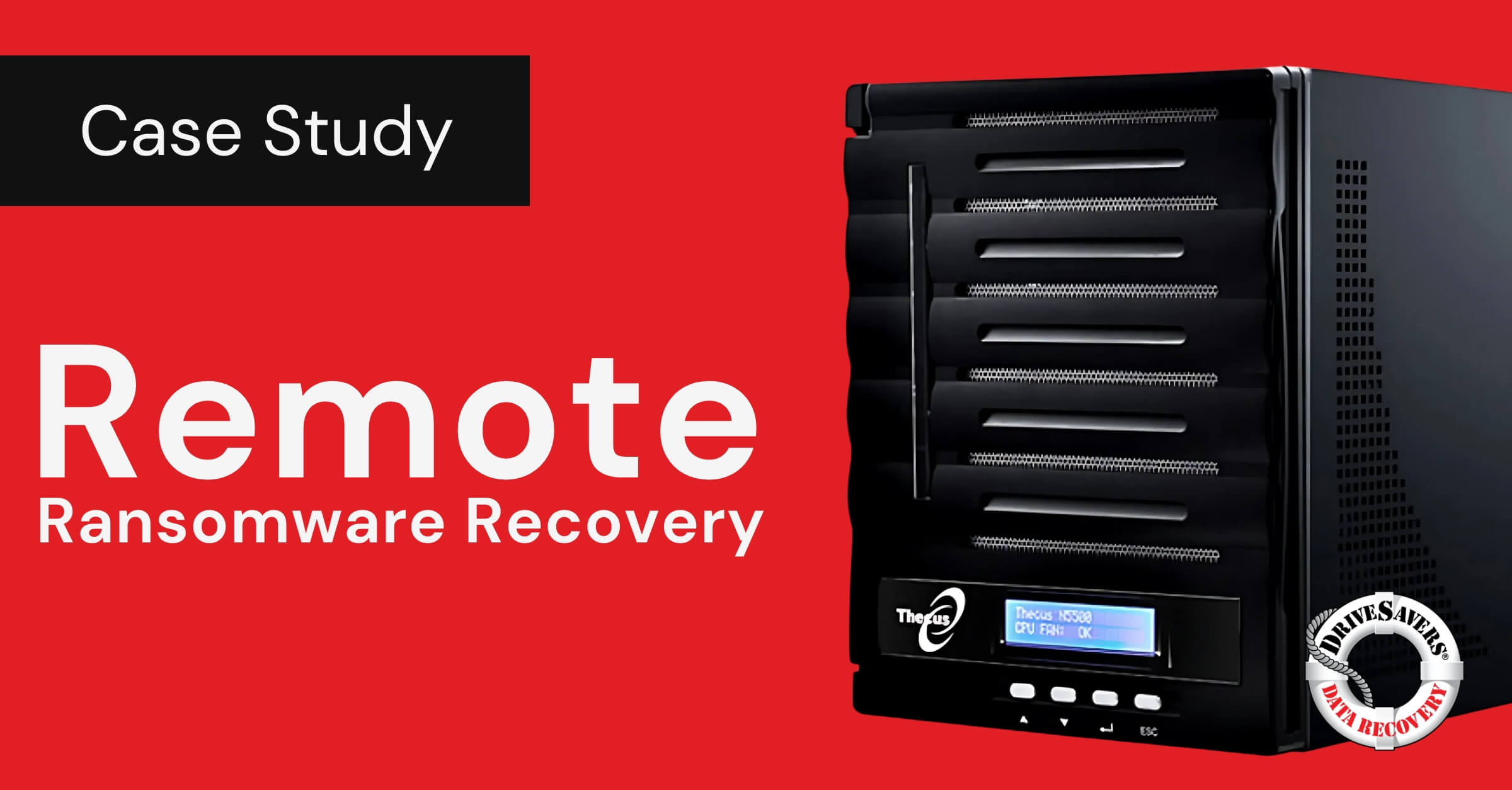Knowing how to password protect an external hard drive is crucial to your overall cybersecurity. ✓ Learn how to protect both PCs and Macs.
Data Recovery Software Debunked

Have you ever lost data? This may seem like a silly question, because who on this earth hasn’t lost data at some point in their computing life? Here’s the real question. What did you do to recover your lost data?
You were probably presented with quite a few results in your Google search. You can troubleshoot the problem yourself and hope you don’t go nuts in the process. You can ask a tech-savvy friend who knows a thing or two (you hope!) about computers to take a look. Or you can seek out a data recovery professional to get you up and running again.
The absolute best solution is to simply grab the last of your regular backups and restore the most recent version of your machine. Because of course, you’ve been routinely backing up your files. But what if you haven’t been making regular backups to your data? (We strongly recommend that you get into the habit today!)
What is Data Recovery Software?
Clearly, there are several data recovery options when (not if) you lose data, but there’s one we haven’t yet mentioned: data recovery software.
Using data recovery software sounds like a good option. From the convenience of your home, you go online, download a program, click your mouse a few times and poof! Your machine is perfectly restored.
But data recovery isn’t that easy.
Using data recovery software, though seemingly simple, affordable and effective, is actually very dangerous. Here’s why you should never use data recovery software to restore your information.
Data can be overwritten
Let’s say you intentionally delete some photos only to discover you still need them. You go to your recycle bin, but they aren’t there. What should you do?
What many people don’t realize is that your data is probably still on the hard drive. When something is deleted, the only thing being truly removed is the data’s entry in the hard drive’s table of contents. That means the hard drive doesn’t know where the file is and neither do you. Meanwhile, the information is actually still on the disk, waiting to be overwritten by new data.
When a large amount of information, like a data recovery program, is downloaded to the hard drive, it can take the place of previously deleted data, like your beloved photos, effectively eliminating any chance you had of actually getting your pictures back. Ironic, right?
Unreliable scans
When a data recovery program seeks out lost information, the software scans the machine for recoverable data. These programs are designed to find the “low-hanging fruit,” so-to-speak, because of their simplistic design.
But so often, data goes missing in the first place because the hard drive’s hardware is failing. If the components within the hard drive are failing, there’s very little hope one of these scans will successfully find your information, because they’re designed to operate on perfectly performing hard drives.
Data also goes missing due to bad sectors and other hardware malfunctions. Data recovery software is designed to gloss over these malfunctions and doesn’t have the capability to go within these errors to retrieve needed information. Essentially, the data is stuck in a place where the data recovery software isn’t designed nor equipped to go.
These programs are usually designed to repeatedly scan sectors until the information is found. But scanning a damaged sector over and over poses another problem. Repeated scans can enhance the damage on a bad sector and completely destroy the equipment.
Viruses are a real risk
You read correctly. If you accidentally download a virus, not only will you have lost your data, but also your computer will be infected! No one wants to deal with data loss, let alone data loss and a computer virus.
But how can this be? Well, some hard drive recovery programs have hidden malware. Once the software has been downloaded to your machine, the program’s secret malware begins to infiltrate.
Malware comes in many shapes and sizes and could be anything from a virus, Trojan, spyware, ransomware and more. The bottom line, malware is designed to damage your equipment, steal your information and cause a lot of headaches in the process.
Temporary benefits, at best
Why did you lose your data in the first place? There’s a good chance the data loss was caused by a hardware issue or technical flaw.
You may have a cracked driver head, corrupt firmware or modules, a scratched platter and more. These physical hardware issues simply cannot be repaired by a computer program alone. There’s no software solution out there to repair an inherently broken device.
When you use hard drive recovery software, the program may be able to retrieve some of your files, but if hardware issues are causing the data loss, the problem will definitely present itself once again. Wouldn’t you rather get to the bottom of the issue in the first place and avoid repeated data loss altogether?
Irreversible damage is possible
When you use data recovery software on broken equipment, you risk more than simply having to repeatedly retrieve your data. You can also permanently damage your hardware. If your data loss is caused by a hardware issue or technical flaw, running data recovery software will only make the situation worse.
For example, say the heads are starting to fail. When you run a data recovery program on your machine, the head will attempt to read sectors, even though they aren’t equipped to do so. The result is a chain reaction of damage, completely destroying the hard drive and any chance you had at retrieving your data.
Data recovery is something we’ll all have to face at some point or another. Hard drives, just like every other piece of technology out there, are fallible equipment. They can and will fail!
When yours does, don’t ruin your chances of data recovery by killing your hard drive with a data recovery program! Create a plan to preserve your data and find a data recovery specialist to get your information back.




